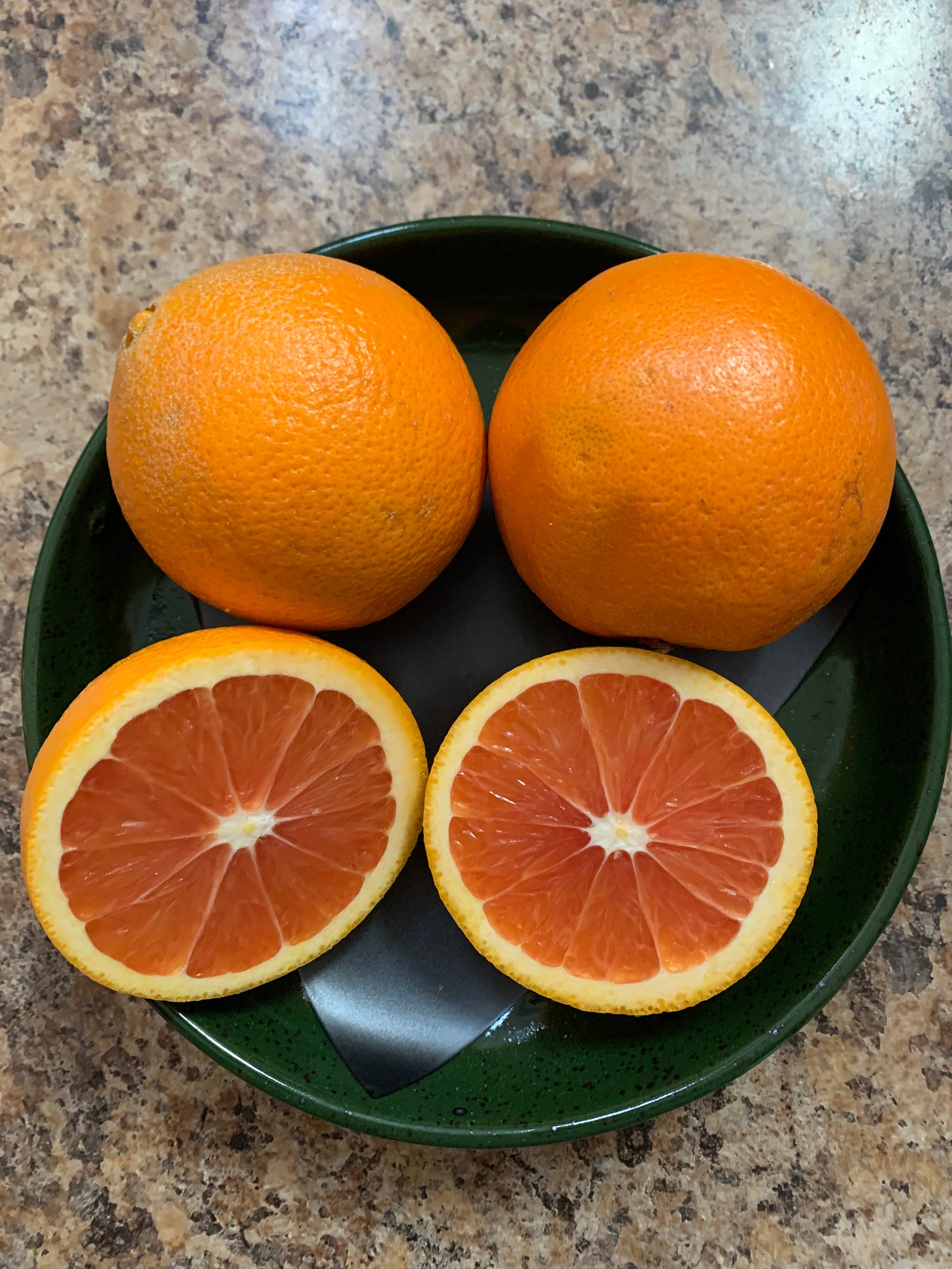In Pittsboro, North Carolina, the Small B&B Café is home to bright tasting breakfasts and farm-to-table lunches weekly, Wednesday to Sunday. Without publicity or prominent reviews, proprietors Dave Clark and Lisa Piper have established a destination dining experience for Raleigh, Durham, and Chapel Hill/Carrboro. For those coming from farther afield, Small offers a spacious guest suite and two modular cottages for overnight lodging. Unlike many bed and breakfast establishments, the owners welcome pets and children. The Sunday brunch is reason enough to book a room. Delicate lemon ricotta pancakes, hearty huevos rancheros, and garlicky, parsley-topped “smashed potatoes” are among the stellar dishes. (Brunch starts at 9 a.m. on Sundays; other days they open at 7:30 a.m. and close at 2 p.m..)
Described as “offbeat and eco-friendly,” the Small compound is only two blocks east of the Pittsboro town square. The place has been up-fitted with repurposed building materials to create a one-of-a-kind aesthetic that combines indoor and patio dining, kitchen gardens and flowerbeds, quirky outdoor art pieces, two hammocks, and an intriguing play space for children. There’s something to see around every corner.
Sign posted on the counter where you place your order at The Small Cafe in Pittsboro, North Carolina. Photo by Donna Campbell
The Small Museum of Folk Art, alongside the café, hosts a growing collection of primitive pieces from some fifty artists, including North Carolina’s own Vollis Simpson and Chatham County’s whimsical chain saw sculptor Clyde Jones. Dave and Lisa curate this jam-packed sideshow with support from Chatham Arts, the North Carolina Arts Council, and volunteer docents. Open on weekends from 10 a.m. to 2 p.m., the nonprofit museum also launched a kids’ art camp this summer. These are some busy people who know what they are doing.
As Donna Campbell put it the first time we visited, the food at Small Café is so wholesome that you want to eat every last thing on your plate, including the garnishes, which may be fresh herbs clipped right outside the kitchen. On one particular Sunday, however, our breakfast plates were topped with a gleaming wheel of citrus. It looked slightly reddish, like a blood orange, but it was much less acidic. We were blown away by just how refreshing and sweet those thin crosscuts of orange were. (You may be old enough to remember when every plate at Howard Johnson’s restaurants carried the saddest piece of desiccated orange and wilted parsley, apparently in an attempt to color up the bland food. As kids we would dare each other to eat the garnish, but no one did. P.S. the very last HoJo restaurant in existence is in Lake George, New York, and 48 percent of the tripadvisor reviews on line rate it as “terrible.”)
Near the end of breakfast at Small Cafe, we snagged Dave to inquire about the orange variety as he delivered another order from the kitchen to a table nearby.
“Cara Cara,” he said over his shoulder and later assured us that we could find these oranges locally. We soon went on the hunt: Harris Teeter at Chapel Hill North. Score!
As I have since learned, this seedless, hybrid orange is the product of a marriage between a Washington navel and a Brazilian Bahia navel. In 1976, the fruit was growing at the Hacienda de Caracara within the Venezuelan State of Carabobo, a region famous for its oranges. An enterprising citrus grower brought some cuttings to Florida and later exported plants to California. The Cara Cara grows well in both states.
By the late 1980s the Cara Cara was offered as a specialty fruit through gift vendors such as Harry & David. (Harry & David were the inventors of the “Fruit of the Month Club” subscription program back in 1937.) However, only in the last several years have Cara Cara oranges been mainstreamed through commercial grocery stores. They are considered an early to mid-season orange, and are now cultivated in South Africa and the Australian outback as well, where they ripen during July and August.
In mid-October this year Cara Caras arrived in the produce section at Ingle’s Grocery in Spruce Pine in the North Carolina mountains. Though these oranges look like regular navels on the outside, the inside flesh is pinkish red—a color created by an abundance of lycopene, an antioxidant with very healthful properties. By contrast, blood oranges, which originated in Spain and Italy, derive their color from anthocyanin, an astringent pigment also found in blueberries, raspberries, and some autumn leaves. The Cara Cara is low in calories–about 70 per orange.
To tell the truth, I had forgotten how fabulous these oranges were until Donna made a Waldorf salad with Mitchell County apples, Georgia pecans, and the other usual ingredients–Duke’s mayo, celery. Then she snuck in some hunks of orange as a surprise. Unfortunately, we and our guests ate all the evidence before we thought to make a photo of this season’s first Cara Cara, and now there are none to be found in the Triangle to show you.
I called Trader Joe’s, Fresh Market, Weaver Street, and Harris Teeter. Nada. At Whole Foods, the produce manager’s voice brightened when she confessed that Cara Caras are her favorite, too. She promised to have them in the store as soon as they are available. At Small B&B this Sunday, Lisa said she, too, had canvassed the Piggly Wiggly, Costco, and Food Lion near her, but no one had them.
Okay, so it’s a little early, but Lisa is also concerned about how much of the harvest might have been damaged by Hurricane Irma, which ravaged many Florida groves in September where growers were already fighting an insect-borne “citrus greening” disease called Huanglongbing, caused by a pathogen carried by a tiny insect from China. This disease causes tree decline and has also affected groves in California, which have suffered severe drought, too.
To find out what I could, I called Pell’s Citrus and Nursery in Osteen, Florida (northeast of Orlando). The Pell family has been harvesting oranges from groves along the Indian and St. John’s rivers since 1925. According to a customer service agent, Pell’s Cara Cara crop did take a big hit because of Hurricane Irma. They had a single bin of the oranges in their retail market last week, she said, and now they are all gone, and they are not likely to have enough to ship for mail orders this year.
Hale Groves–another Indian River establishment 100 miles to the south in Vero Beach–reports that hurricane damage was less severe there. They plan to ship Cara Cara oranges beginning December 4 at $4.75 per pound for the smallest retail order available. The price drops with higher quantities.
On the west coast, Harry & David, headquartered in Medford, OR, told me they’d be shipping Cara Cara oranges only from California this year, beginning December 2nd. Harry and David’s smallest order is $5 per pound for a minimum of seven pounds.
So where did Ingle’s get those oranges in mid-October? Donna called Bobby, the produce manager in Spruce Pine. Though he admitted he’d never tasted a Cara Cara, he knows they are popular. Both last year and this year, he said, the Ingle’s warehouse in Black Mountain received their Cara Cara oranges from California. So keep an eye out. Try one if you find them in your grocery, and let me know what you think!






